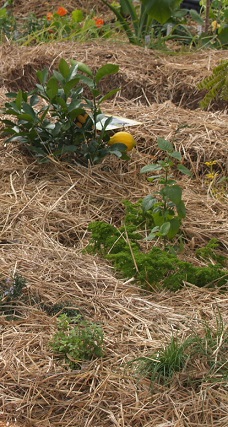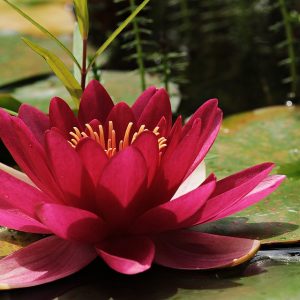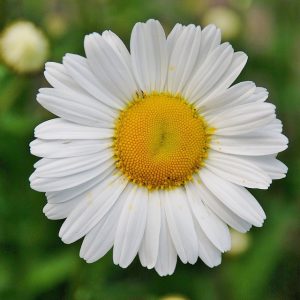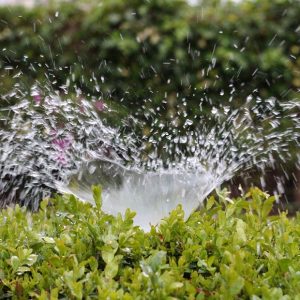 A specialist plant protection qualification – gain an in depth knowledge of plant protection that is useful for anyone working within the horticulture industry.
A specialist plant protection qualification – gain an in depth knowledge of plant protection that is useful for anyone working within the horticulture industry.A 700-hour certificate that provides initial training in the area of plant protection. This course is similar to other VHT002 horticulture certificates in its introductory (core) units, but devotes 50% of the course to topics specifically related to plant protection. Accredited through International Accreditation & Recognition Council
Learn Practical Skills for a Career in Professional Gardening
‘This is beyond what you would learn in a Trade Certificate in Horticulture. It teaches you everything a tradesman would learn about plant culture; and more science, plus more plant identification than what an average tradesperson would know” – John Mason Dip.Hort.Sc., Cert.Supn, FCIH, FIOH, FPLA, Professional Horticulturist for over 40 years, Garden Author and educator.
“Specialise in the treatment of pest and disease problems.”- Tracey Morris Dip.Hort., Cert.Hort., Cert III Organic Farming, ACS Tutor.
The Certificate in Horticulture (plant protection) involves the following areas of work:
- CORE STUDIES – involves at least 350 hours, divided into 15 lessons, approx. half of the course.
- STREAM STUDIES – a further 350 hrs of study specifically relating to plant protection
CORE STUDIES
Students must complete and pass all of these core units.
1. Introduction to plants
The purpose of this study area is to explain the binomial system of plant classification and demonstrate the identification of plant species through the ability to use botanical descriptions for leaf shapes and flowers.
Objectives
- Describe the relevant identifying physical features of flowering ornamental plants.
- Demonstrate how to use prescribed reference books and other resources to gain relevant information.
- Dissect, draw and label two different flowers.
- Collect and identify the shapes of different leaves.
- Demonstrate how to identify between family, genus, species, variety and cultivar.
2. Plant culture
The purpose of this study area is to demonstrate the ability to care for plants so as to maintain optimum growth and health while considering pruning, planting, and irrigation.
Objectives
- Describe how to prune different plants.
- Demonstrate how to cut wood correctly, on the correct angle and section of the stem.
- Describe how to plant a plant.
- Demonstrate an awareness of different irrigation equipment, sprinklers, pumps and turf systems available by listing their comparative advantages and disadvantages.
- Demonstrate competence in selecting an appropriate irrigation system for a garden, explaining why that system would be preferred.
- Define water pressure and flow rate and how to calculate each.
- Explain the need for regular maintenance of garden tools and equipment.
- List factors that should be considered when comparing types of machinery for use in garden maintenance.
3. Soils and plant nutrition
The purpose of this study area is to provide students with the skills and knowledge to identify, work with, and improve the soil condition and potting mixes, and to evaluate fertilisers for use in landscape jobs to maximize plant growth.
Objectives
- Describe the soil types commonly found in plant culture in terms of texture, structure and water-holding and nutrient holding capacity.
- Describe methods of improving soil structure, infiltration rate, water holding capacity, drainage and aeration.
- List the elements essential for plant growth.
- Diagnose the major nutrient deficiencies that occur in ornamental plants and prescribe treatment practices.
- Describe soil pH and its importance in plant nutrition.
- Describe the process by which salting occurs and how to minimise its effect.
- Conduct simple inexpensive tests on three different potting mixes and report accordingly.
- Describe suitable soil mixes for container growing of five different types of plants.
- List a range of both natural and artificial fertilizers.
- Describe fertilizer programs to be used in five different situations with ornamental plants.
4. Introductory Propagation
The purpose of this study area is to improve the student’s understanding of propagation techniques with particular emphasis on cuttings and seeds. Other industry techniques such as grafting and budding are also explained.
Objectives
- Demonstrate propagation of six (6) different plants by cuttings and three from seed.
- Construct a simple inexpensive cold frame.
- Mix and use a propagation media suited to propagating both seed and cuttings.
- Describe the method and time of year used to propagate different plant varieties.
- Describe and demonstrate the steps in preparing and executing a variety of grafts and one budding technique.
- Explain the reasons why budding or grafting are sometimes preferred propagation methods.
5. Identification and use of plants
The purpose of this study area is to improve the student’s range of plant knowledge and the plant use in landscaping and the ornamental garden, and the appreciation of the different optimum and preferred growing conditions for different plants.
Objectives
- Select plants appropriate for growing in different climates.
- Select plants appropriate to use for shade, windbreaks, as a feature, and for various aesthetic effects.
- Categorise priorities which effect selection of plants for an ornamental garden.
- Explain the differences in the way plants perform in different microclimates within the same area.
- List and analyze the situations where plants are used.
6. Pests, diseases and weeds
The purpose of this study area is to develop the student’s ability to identify, describe and control a variety of pests, diseases and weeds in an ornamental situation, and to describe safety procedures when using agricultural chemicals.
Objectives
- Explain in general terms the principles of pest, disease and weed control and the ecological (biological) approach to such control.
- Explain the host‑pathogen‑environment concept.
- Describe a variety of pesticides for control of pests, diseases and weeds of ornamental plants in terms of their active constituents, application methods, timing and rates, and safety procedures.
- Photograph or prepare specimens, identify and recommend control practices for at least five insect pests of ornamental plants.
- Photograph, sketch or prepare samples, identify and recommend control practices for three non‑insect ornamental plant health problems (e.g. fungal, viral, bacterial).
- Describe the major ways in which diseases (fungal, viral, bacterial and nematode) affect turf, the life cycle features that cause them to become a serious problem to turf culture and the methods available for their control.
- Identify, describe and recommend treatment for three different weed problems.
- Collect, press, mount and identify a collection of ten different weeds, and recommend chemical and non-chemical treatments which may be used to control each.
- List and compare the relative advantages and disadvantages of different weed control methods.
Stream Plant Protection consists of:
- Diagnosing Problems
- Pest & Disease Problems
- Nutrient & Environmental Problems
- Pest Collection
- Natural vs Chemical Controls
- Integrated Pest Management
- Application Equipment
- Pesticide Grouping
- Chemical Terminology
- Pesticide Timing
- Pesticide Dynamics
- Controlling Pests
- Controlling Diseases
- Controlling Pests & Diseases In Nurseries
- Controlling Other Factors





